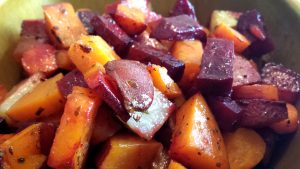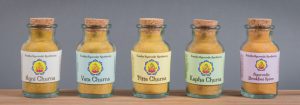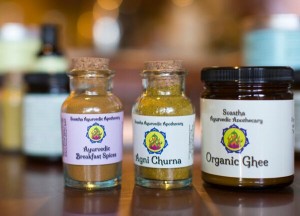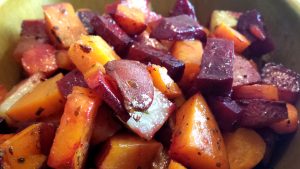 What better way to welcome in the Fall than with some grounding root veggies. I have come to the conclusion that fall is officially my favorite season, and I am beyond excited to have some herbal teas, winter spices, and warm meals back in my life again. In fact, with Vata dosha being predominant during the fall season, all of these “treats” not only feel great, but are actually helping to keep my body and mind in balance during these transitional months. This recipe has been a slight obsession of mine and although it can be a healthy side dish, I have been enjoying it as my main meal more often than not lately.
What better way to welcome in the Fall than with some grounding root veggies. I have come to the conclusion that fall is officially my favorite season, and I am beyond excited to have some herbal teas, winter spices, and warm meals back in my life again. In fact, with Vata dosha being predominant during the fall season, all of these “treats” not only feel great, but are actually helping to keep my body and mind in balance during these transitional months. This recipe has been a slight obsession of mine and although it can be a healthy side dish, I have been enjoying it as my main meal more often than not lately.
This roasted root veggie recipe keeps it fairly simple using sweet potatoes, beets, red potatoes, onion, and carrots; fairly typical roots, but none the less extremely tasty and full of essential nutrients. Besides offering us tons of vitamins, minerals (especially iron), and fiber this dish is a great way to get a variety of colors into your diet indicating the high level of antioxidants that these veggies provide. The warming Ayurvedic spices are added to enhance the flavor, increase the digestive fire, and promote absorption of all the healing nutrients.
Ayurvedic Roasted Root Veggies Recipe
Click here for a printable copy of this recipe.
- Doshic effect: Vata ↓,Pitta ↑*, Kapha ↑*
- Yield: 6-8 servings (as a side dish)
- Prep Time: 20 minutes
- Bake Time: 90 minutes
- Gluten-free, Grain-free
- Vegetarian-Vegan
*See optional doshic variations below.
Materials
- Glass baking dish, about 9” x 12”
- Large knife and cutting board
- Vegetable peeler
- Tin foil to cover the glass dish
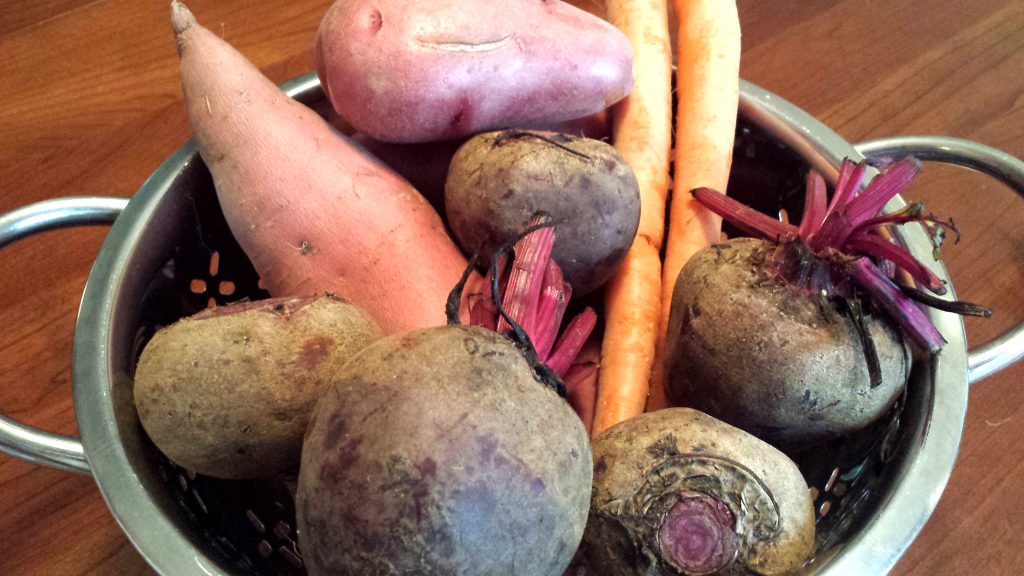
Ingredients
- 1 medium beet
- 1 large sweet potato
- 1 medium red potato
- 2 medium carrots
- 1 small onion
- Fresh ginger root (1 inch cube), finely grated or minced
- 1/4 teaspoon turmeric powder*
- 1/4 teaspoon cumin powder*
- Pinch of cayenne pepper (optional)
- 2 tablespoons apple cider vinegar
- 2 tablespoons olive oil
- 1/4 teaspoon pink Himalayan salt
- 1/8 teaspoon freshly ground pepper
*Spices can be replaced with equal amounts of Agni Churna.
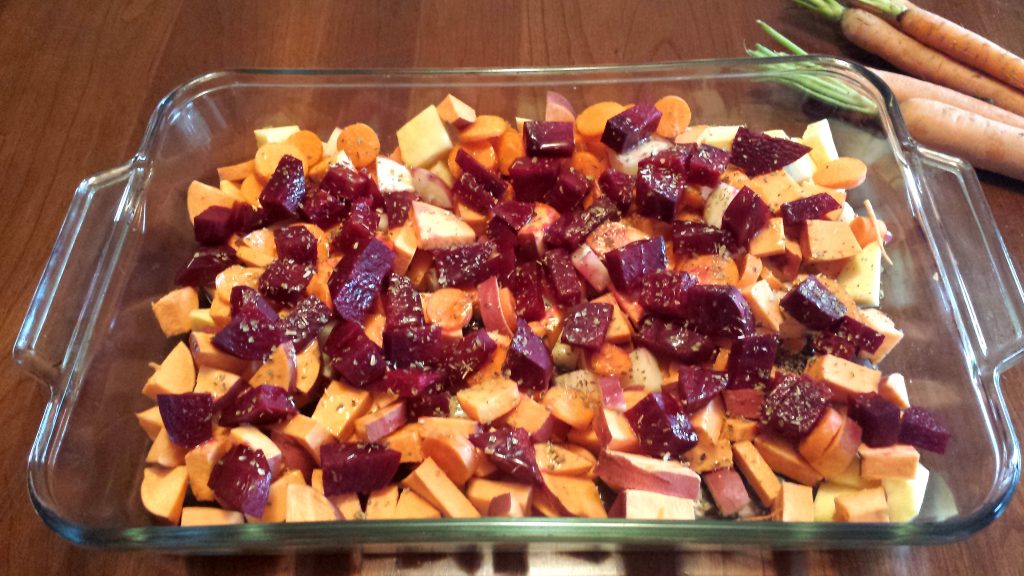
Click here for a printable copy of this recipe.
Directions
1. Preheat the oven to 425 degrees.
2. Take all of the veggies and wash thoroughly, making sure to rinse away any unwanted dirt.
3. Peel the beets. This is the only veggie that I peel since I have had experience with crunchy dirt left on even after washing well. Otherwise I keep the peels on for the remainder of the veggies. You are welcome to peel the other veggies, but keep in mind that most of the nutrients are found in the skin.
4. Chop the beet and potatoes into even 1” cubes. If you have too many different sizes they may cook unevenly. Avoid anything larger than 1” as this may increase the cooking time.
5. Slice the carrots into thin slices about the thickness of a quarter. Chop the onion into 1/2 inch cubes.
6. Place all of the chopped and sliced veggies into the glass baking dish.
7. Slowly pour the olive oil over the veggies. Then add the turmeric, grated ginger, cayenne pepper (if used), and cumin powder.
8. Stir well making sure to immerse the entire dish with the oil and spices.
9. Cover the dish with a sheet of tin foil. This helps to retain the moisture and prevents the veggies from drying out.
10. Place the glass dish into the heated oven.
11. Bake for 75 minutes and then check on the veggies. Ideally find the largest slice and gauge the tenderness from this piece. If you need a bit more time, then place the dish back in the oven for 5 to 15 minutes.
12. Once done, you can pour on the apple cider vinegar along with the salt and black pepper. Stir thoroughly, allowing these remaining ingredients to mix evenly.
13. Serve immediately while warm and tender. Any extra will be good for up to 5 days.
Optional Doshic Variations
Vata:
This recipe a great option for Vata as is. It is very grounding and nourishing.
Pitta:
Pitta types can enjoy this recipe in moderation during the cooler fall and winter months. However, it is recommended that they omit the apple cider vinegar and avoid the cayenne pepper. They can cut the amount of beets and onion in half. Pitta Churna can also be used to help balance the heating nature of this dish even further.
Kapha:
This recipe is fairly heavy and contains a high amount of naturally occurring sugars. Therefore it should be avoided by anyone with a strong Kapha imbalance such as diabetes and obesity. A balanced Kapha type can enjoy this recipe in small amounts with the following changes. The fresh ginger should be replaced with 1 teaspoon of dry ginger and the listed spices should all be used generously. If tolerable the cayenne pepper should be used to help kindle the digestive fire and the apple cider vinegar can be increased to 3 to 4 tablespoons. The Himalayan salt should be used sparingly and the olive oil should be cut in half to 1 tablespoon. Garlic can be added to help increase digestion if desired. Kapha Churna can be used to help balance the heavy nature of this dish even further.
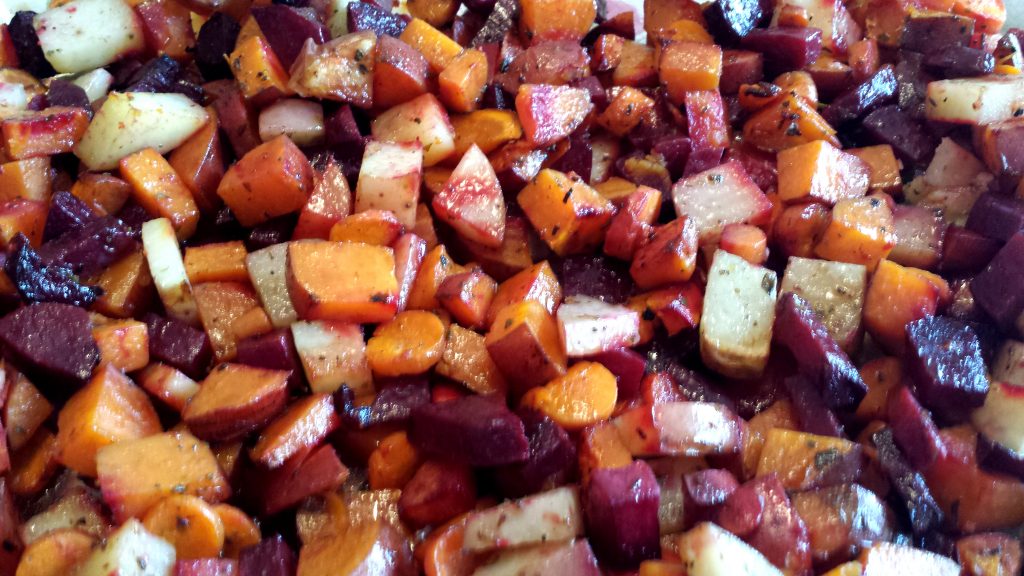
Discover our full collection of Ayurvedic Cooking Spices!
Click here to see our full apothecary menu.

